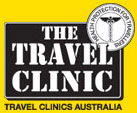Hepatitis A is the most frequently occurring vaccine-preventable infection in travellers.
- It is a viral infection of the liver spread by person to person (faeco-oral route) or by contaminated food and water
- Resort level of accommodation does not exclude the risk
- Death rate up to 3%
- Up to one in 50 travellers are affected with jaundice, abdominal pain, fever and malaise for up to 3 months, severity greater with age
- Preventable with vaccination and careful attention to personal hygiene and diet
Hepatitis B is a vaccine preventable viral infection of the liver spread by infected body fluids –blood, semen, mucus, and saliva.
- At least 150,000 people are chronic carriers of the disease and 1200 deaths are reported annually in Australia. A significant percentage of travellers develop the disease overseas
- Up to 50% infected with hepatitis B will die from cancer of the liver later in life or liver failure
- Acute infection features jaundice, abdominal pain, fever and malaise for up to 6 months
- Hepatitis B vaccine is now routinely given to neonates and adolescents
Other forms of hepatitis include C, D & E and are transmitted in similar ways to hepatitis A and B, however no vaccines are available for these yet.


